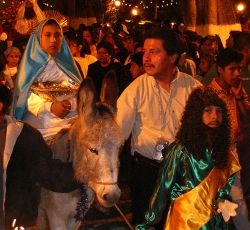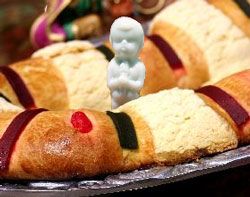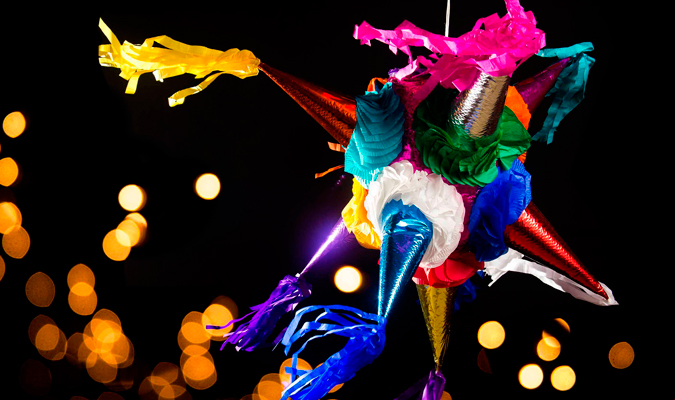A traditional Mexican Christmas is filled with wonder. In other countries, the 12 Days of Christmas are recognized, but in Mexico, the nine days of Posadas leading up to Noche Buena (Holy Night) – are rigorously observed.

Starting on December 16th, Joseph and Mary’s quest for lodging in Bethlehem is reenacted every night in towns and villages throughout Mexico. Acted out by local children, these pilgrims try door after door until they’re finally invited in for the night.
Every evening, a different neighbor is chosen, and it’s their task to host a celebration complete with a piñata for the children and something a little more spirited for the adults.
The ninth evening of Las Posadas is La Noche Buena, Christmas Eve. The children lead a procession to the church and place a figure of the Christ Child in the nacimiento (nativity scene) there.
Then everyone attends midnight mass, called the Misa de Gallo, (Rooster’s Mass.) After mass, families return home for a festive dinner and traditional drinks before the gifts are opened, piñatas are broken and sparklers light up the night. Christmas Day is considered a time to rest, recover and enjoy the leftovers!
Although Santa Claus has been known to slip over the border in recent years, the traditional day for Mexican children to receive presents is still January 6, known as El Dìa de Los Reyes (Three Kings Day.) It commemorates the time when, according to legend, the Reyes Mago, Melchor, Gaspar, and Baltazar, arrived at the manger in Bethlehem to pay homage to the Christ child with their gifts of gold, frankincense, and myrrh.
Traditionally on the night of January 5, the figurines of the Three Wise Men are added to the nativity scene. That night before going to bed children place their old shoes on the windowsill, where the Wise Men leave them their presents. Nowadays, shoes are not always put out but the youngest children in each family still receive gifts from the Three Kings on this day.

At a special Twelfth Night supper on January 6, families and friends enjoy hot chocolate flavored with vanilla and cinnamon, and a ring-shaped, bread-like cake, called Rosca de Reyes. Hidden inside is a small figure of a baby, representing the Infant Jesus. The person who gets the piece with the figurine is responsible for buying the tamales for El Día de la Candelaria, or Candelmas, February 2.
The Mexican Christmas season is joyously extended though February 2 when the nativity scene is put away, and another family dinner of delicious tamales and atole (a hot, sweet drink thickened with corn flour) is served with great love and happiness. This celebration is the last of the Christmas festivities, 40 days after the birth of Jesus.


